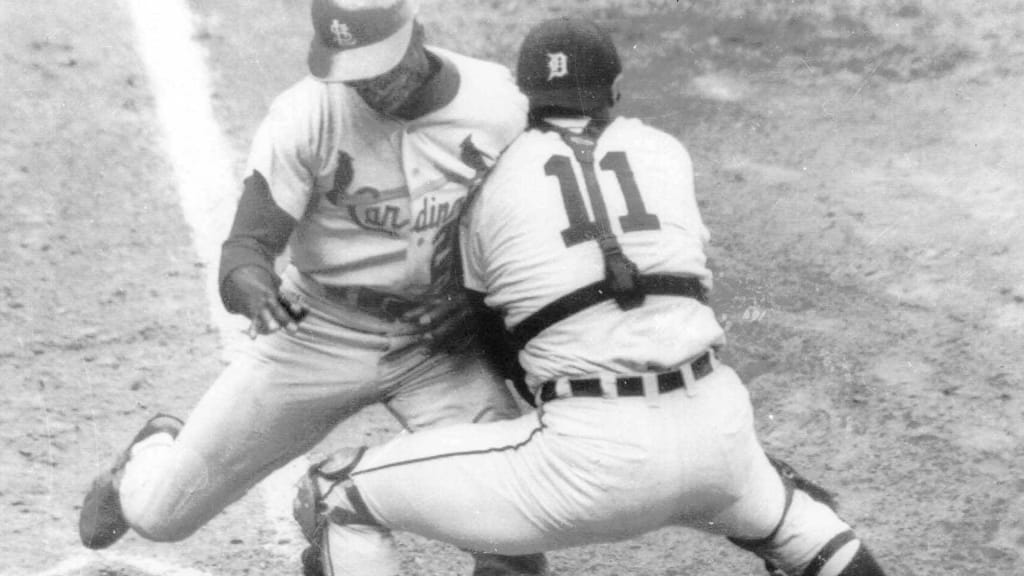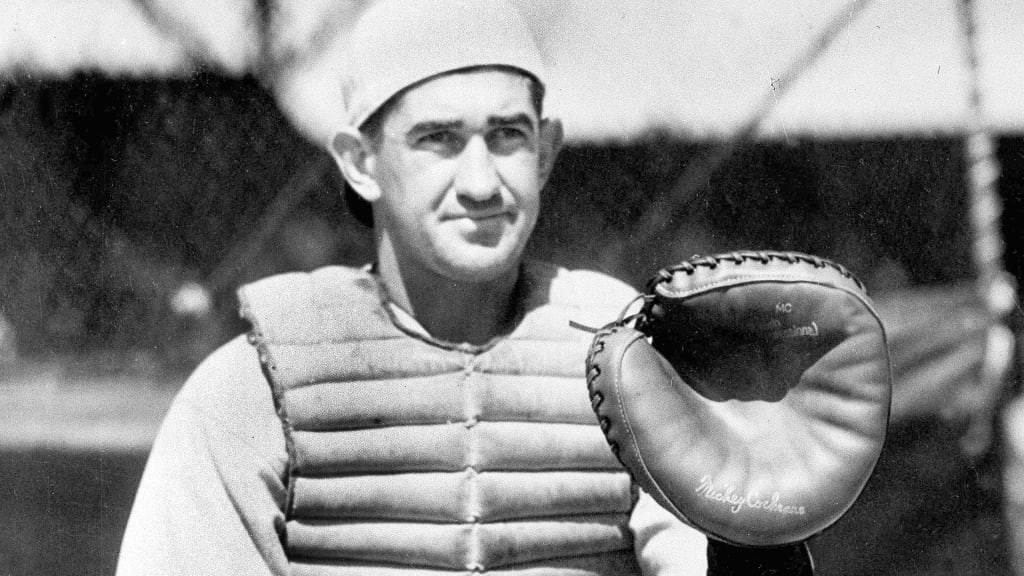
No one loves a debate quite like baseball fans. With that in mind, we asked MLB.com’s beat reporters to rank the top five players by position in the history of the franchise they cover, based on the players’ career with that club. These rankings are for fun and debate purposes only -- if you don’t agree with the order, vote for your favorite at this position in our Twitter poll.
Here is MLB.com’s ranking of the top five catchers in Tigers history. Next week: The best at first base.
1. Bill Freehan, 1961-76
Key fact: 11-time All-Star
The Tigers have had bigger names behind the plate, but nobody has ever matched the consistency and durability of Freehan, who hit .585 as a freshman for the University of Michigan in spring 1961 before making his big league debut for Detroit that September. Three years later, in 1964, he was a .300-hitting All-Star, having received the first of his 10 consecutive selections to the Midsummer Classic. He would go on to win five consecutive Gold Gloves at catcher (1965-69).
While Al Kaline, Willie Horton and Denny McLain were the stars of the Tigers in the 1960s, Freehan was the rock. He finished second in the American League Most Valuable Player Award voting in 1968 behind McLain.
“I get very upset that his name is never mentioned [among the Tiger greats],” Kaline said a couple years ago. “He was consistently, in my opinion, the best player that I played with for a long period of time. There were some guys that had better years than him, but he was solid for a long period of time. He was really the leader of our ballclub. He caught every day, he was a force behind the plate and he got a lot of big hits.”
According to Baseball Reference, Freehan owns three of the top four seasons in Tigers history for Wins Above Replacement by a catcher, capped by a 6.9 bWAR in 1968. He hit 25 home runs to go with a career-best 84 RBIs in that ’68 season, along with 24 doubles, and he was hit by 24 pitches. He also famously blocked the plate on Lou Brock for a critical out at home plate in Game 5 of the World Series that year.
Freehan caught 1,581 games, all with the Tigers. He started 142 games behind the plate in 1971.
2. Mickey Cochrane, 1934-37
Key fact: Served as player/manager/GM for two years
Cochrane was already an AL MVP Award winner and he was regarded as one of the best at his position when the Tigers acquired him from the Philadelphia Athletics after the 1933 season. Cochrane became a hero in Detroit, taking on catching and managerial duties for a club that hadn’t finished better than fourth in the American League in a decade. Cochrane led Detroit out of baseball’s doldrums with his bat, his arm and his instinct, earning AL MVP honors in 1934 while batting .320 with 32 doubles and 75 RBIs and throwing out 52 percent of would-be basestealers. The Tigers lost the World Series in seven games to the Cardinals in ’34, but won their first title the next year behind a .902 OPS season from Cochrane.

Cochrane played just 71 more games over his final two seasons in Detroit, taking on general manager duties in addition to player-manager. But his legacy was assured; he was elected to the Baseball Hall of Fame in his first year on the ballot in 1947.
3. Lance Parrish, 1977-86
Key fact: One of four catchers in history with three or more Gold Glove and Silver Slugger awards
The strength of the Tigers in the 1980s was up the middle, from Chet Lemon in center field to Alan Trammell and Lou Whitaker as a double-play combo to Jack Morris on the mound. But few had a stronger presence than Parrish behind the plate. At his peak, he averaged 30 homers and just under 100 RBIs per season from 1982 to 1985, capped by 114 RBIs in 1983. He also threw out nearly half of would-be basestealers in 1983, a year in which the league’s caught-stealing percentage was just 33 percent. Parrish also won three Gold Gloves and three Silver Sluggers in that stretch, in addition to becoming a perennial All-Star selection (eight times from 1980 to 1990).
By nearly any measure, he was the dominant catcher in the American League for the first half of the 1980s, an ultimate offensive-defensive threat. Parrish’s “Big Wheel” nickname wasn’t just a reference to his size; it was a tribute to his role in making the Tigers go. Only Justin Verlander has a higher WAR than Parrish’s 39.5 among Tigers first-round picks in the MLB Draft.
4. Ivan Rodriguez, 2004-08
Key fact: Batted .500 for a month in June 2004
“Pudge” wasn’t simply a Hall of Fame catcher; he was an icon for Detroit’s revival in the 2000s. His signing just before Spring Training in 2004 heralded a new era for the franchise as Tigers owner Mike Ilitch invested in underappreciated free agents to fuel a rally from 119 losses in 2003 to the World Series in 2006. Once he got on the field, Rodriguez was a huge part of the rebound. He hit .334 with an .893 OPS, 32 doubles and 86 RBIs in 2004, then hit .300 with 69 RBIs in 2006. He was an All-Star in each of his four full seasons in Detroit, and he earned three Gold Gloves to boot, throwing out more than half of would-be stealers in 2005 and 2006.
Here’s how good of an athlete Rodriguez was: When the Tigers were left without a second baseman after Placido Polanco was injured during a critical mid-August game in Boston in 2006, Rodriguez moved from catcher to second -- and he ran down a pop fly in the ninth inning as the Tigers rallied to win. Give me a glove, Rodriguez once said, and I can play anywhere.
5. Mickey Tettleton, 1991-94
Key fact: Posted 30+ homers, 100+ walks and 100+ strikeouts in three consecutive seasons from 1991-93
Tettleton is a tricky name to judge on this list, because he was a full-time catcher for his first two seasons in Detroit before shifting to his role primarily as a DH for his final two years with the Tigers. But even if you shrink his Tiger tenure by which to judge, he was an offensive force as a catcher, and one of Detroit’s shrewdest acquisitions in the decade. Jeff Robinson, the pitcher sent to Baltimore by Tigers general manager Joe McDonald in exchange for Tettleton, was in the Majors for just two more seasons.
Tettleton’s .878 OPS, 31 homers and 89 RBIs in 1991, his first season in Detroit, produced a 5.6 WAR season, the highest by a Tigers catcher not named Freehan. Despite a 25-point drop in batting average to .238 the next year, he led the league with 122 walks to go with 32 homers and 83 RBIs. He earned Silver Slugger awards for both the 1991 and ’92 seasons.
